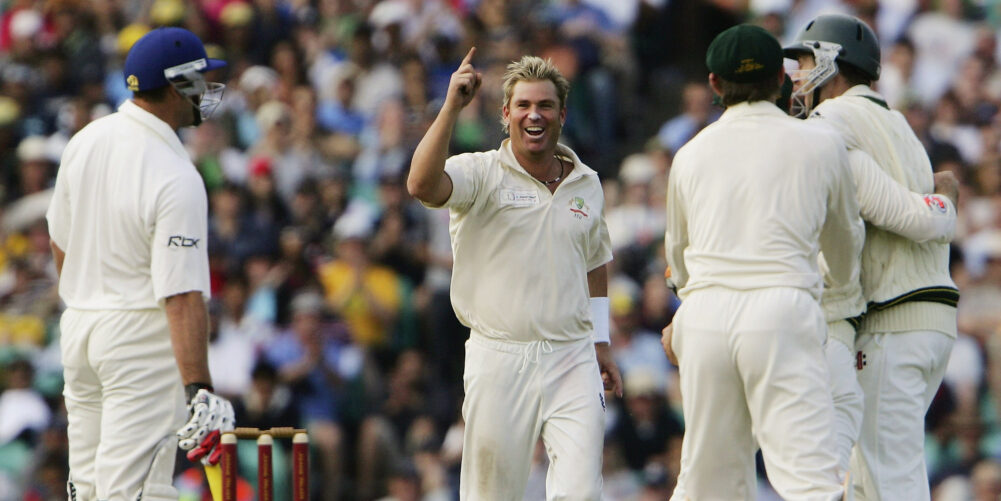Richard Edwards looks at how and why Malcolm Speed’s Super Series failed despite the cricketing talent it put on show
Test cricket has hardly been synonymous with innovation since the first match was played in 1877, but in 2005 the ICC took a giant leap of faith by pitting Australia against a ‘Rest of the World’ side in a Super Series that divided opinion across the sport.
Announced in July 2004 by then ICC president Malcolm Speed, the series, which included three one-day matches and a single six-day Test, would pit the world’s highest-ranked side against the best that the rest of the world had to offer. It was, according to Speed, a ‘thrilling’ prospect.
“The creation of the ICC Super Series will ensure these matches become a major event on the international calendar,” he said. “Cricket enjoys a tradition of national teams playing Rest of the World sides and these matches have provided terrific cricket.”
With a prize fund totalling almost £1m, the proposal was greeted with more than a healthy dose of cynicism by those who viewed the series as little more than a gimmick to line the pockets of world cricket’s governing body.
It would be the first time a Rest of the World XI had played on Australian soil since a side captained by Garfield Sobers played a five Test series Down Under in 1971/72. That series captured the imagination of the public, not least because it offered them the opportunity to see the likes of Graeme and Peter Pollock in the flesh during the time of South Africa’s sporting isolation.
Surely, the ICC reasoned, there was no reason why the concept couldn’t take off over 30 years later? They even threw in the first use of cricket’s referral system as a means of generating additional interest.
Australia confirmed their place as the number one side both in the Test and one-day game in February 2005, meaning that they would take on the World XI in both formats. That at least guaranteed home interest in the one-day series and the one-off Test. What it didn’t guarantee, though, was the kind of competitive cricket that the ICC had so proudly trumpeted the previous summer.
Coming straight off the back of their first Ashes defeat since 1986/87, Ricky Ponting’s side had a point to prove when the World XI finally touched down. The tourists, meanwhile, had the look of a side thrown together at the last minute, which, of course, they were.
Of greater concern to then-England coach, Duncan Fletcher, was the fact that the twin spearheads of his bowling attack, namely Steve Harmison and Andrew Flintoff, were involved in what amounted to little more than a meaningless spectacle just weeks before his side flew off to Pakistan to build on their spectacular summer success.
“Whatever the outcome, England coach Duncan Fletcher must be gnashing his teeth as he sits powerlessly at home,” wrote Simon Briggs of the Telegraph as the Test began in Sydney. “Flintoff and Harmison are the twin engines of his Pakistan masterplan: he would rather they were rusty when the series begins next month than clapped out by relentless overwork.”

By the time the England pair had begun their work in the Super Test, the farcical nature of this hopeless experiment had already been laid bare. After scrapping past Victoria in a one-day warm-up in Melbourne by 12 runs, the World XI were thumped 3-0 in the ODI series that proceeded the Sydney showdown.
Shaun Pollock’s side reached their nadir at Melbourne’s Docklands Ground in the third and final match when they were hammered by a whopping 156 runs. A batting line-up containing Chris Gayle, Brian Lara, Virender Sehwag, Rahul Dravid, Jacques Kallis and Kumar Sangakkara mustered just 137 in response to Australia’s 293-5.
Unsurprisingly, given his side had just put the rest of the world in its place, Ponting still thought the idea behind the series was a good one. “It is still a great concept,” he said. “I hope the result doesn’t prove to be detrimental to the idea. There were some pretty good players and I reckon the Test match might be a bit more different.”
If the experiment of chucking together the world’s best one-day players for a series against perhaps one of the best-drilled teams in history was a failure in the one-day arena, it was about to be proved a complete disaster in the one-off Test that followed.
With captain Graeme Smith picking an ultra-cautious side of only one recognised fast bowler – in Harmison – backed up by the all-round talents of Flintoff and Kallis, the Aussies tore in to the tourists. A century from Matthew Hayden, who had struggled so dismally in England that summer, and a typically rumbustious 94 from Adam Gilchrist – who had struggled even more – meant the home side finished day one on 331-6.
When the final four wickets fell for just 14 runs on the second morning, the World XI could arguably have claimed it was honours even. Their batting, though, was about to ensure that this was as good as it got, with the leg-spin twins of Shane Warne and Stuey McGill running through the World XI line-up in 47 overs that yielded just 190.
With Harmison and Flintoff at least keeping the English end up in the Aussie’s second innings – the pair took six wickets between them as Ponting’s side were dismissed for 199 – a total of 355 was always going to be too much for a side that looked the exact opposite of the coherent unit they were up against.
After predictably sliding to a paltry 144 all out, the knives were out – not for the players but for an idea that had been made to look flawed from the off. The press in both hemispheres were utterly scathing.
Only the late Peter Roebuck, then writing in The Independent, defended the ICC’s botched attempts at creating a wider context for Test cricket.
“No harm has been done, though,” he wrote. “No one can be blamed for trying something. Much the same applies to the referring of appeals. Nothing ventured, nothing gained.”
Others were not so charitable.
“Waiting for another Super Series? Don’t hold your breath,” sneered Will Swanton in the Sydney Morning Herald. “Speed has done a backflip over the concept in the aftermath to the hopelessly lopsided contests between a resurgent Australian team and the badly misfiring Rest of the World. In all likelihood, this is the end of the World XI as we know it.
“It might not have been do or die for the players, but it was for the concept. No need to go to the video umpire. It’s out.”
For his part, Speed defended the concept, saying it had been ‘profitable’ for member nations. He also said he ‘shared the disappointment’ of a World XI who had been branded ‘World Class Losers’ by the Sydney Morning Herald following their humbling at the SCG.
Perhaps the most damning indictment of the experiment, though, came from Graeme Smith, who had captained the World XI in the one-off Test.
The match had, he said, made him realise how much he appreciated playing for South Africa. Ouch.
The video replay pioneered in the series has, of course, now established itself as a staple of the world game. But while the hunger for technology has remained, there’s precious little appetite for the return of a concept that looked doomed from the outset.
This piece originally featured in The Cricket Paper, November 11 2016
Subscribe to the digital edition of The Cricket Paper here















